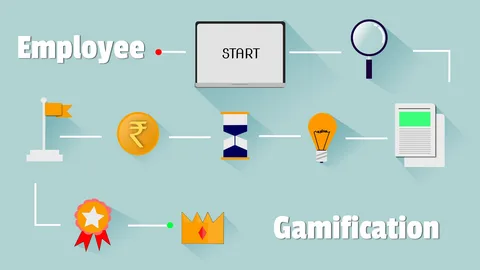Introduction
Employee onboarding is a critical aspect of creating a positive and productive work environment. Its significance extends beyond just introducing a new hire to the company; it sets the tone for their entire employment experience. In this article, we’ll explore the best practices for effective employee onboarding, focusing on strategies that contribute to both short-term assimilation and long-term retention.
Preparing for Onboarding
- Communication Before Day One The onboarding process begins before the new employee walks through the door. This section will emphasize the importance of clear and consistent communication before the first day, ensuring that new hires feel welcome and informed.
- Setting Expectations Managing expectations is key to a smooth onboarding experience. We’ll discuss how setting clear expectations regarding the first day, initial tasks, and the overall onboarding process helps reduce anxiety and enhances the new employee’s confidence.
Day One: Making a Positive First Impression
- Warm Welcome First impressions matter. This part will explore the elements of a warm welcome, including a personalized introduction, a tour of the office, and a friendly atmosphere that puts new employees at ease.
- Introduction to Company Culture Understanding and embracing company culture is vital for long-term employee satisfaction. We’ll discuss how to introduce new hires to the company’s values, mission, and working norms on the very first day.
- Overview of Company Policies Clear communication of company policies sets the foundation for a successful working relationship. This section will cover the essential policies new employees need to be aware of, promoting a sense of security and adherence to company standards.
Structured Training Programs
- Job-specific Training Tailored training programs are crucial for equipping new hires with the skills they need. We’ll delve into how job-specific training, both theoretical and practical, ensures that employees are well-prepared for their roles.
- Introduction to Tools and Systems Efficient onboarding includes familiarizing employees with the tools and systems they’ll be using daily. This part will discuss the importance of providing comprehensive training on software, equipment, and other relevant tools.
- Mentorship Opportunities Having a mentor can significantly impact a new employee’s experience. We’ll explore how mentorship programs contribute to a smoother onboarding process by providing guidance, support, and a reliable point of contact.
Team Building Activities
Building a sense of belonging is crucial for employee retention. This section will discuss team-building activities that foster camaraderie and integration, creating a positive and collaborative work environment.
Encouraging Social Interaction
Social bonds contribute to a positive workplace culture. We’ll explore strategies for encouraging social interactions among team members, both within and outside the work context.
Clarifying Roles and Responsibilities
Clear communication about roles and responsibilities is fundamental for employee success. This part will discuss how providing a detailed understanding of expectations contributes to confidence and job satisfaction.
Continuous Support and Feedback
Ongoing support is essential for a new employee’s adjustment. We’ll discuss the importance of regular check-ins, addressing concerns, and providing constructive feedback to ensure continuous improvement.
Feedback Mechanisms
Feedback is a two-way street. This section will explore the various feedback mechanisms that can be implemented during the onboarding process, fostering open communication and mutual understanding.
Addressing Concerns Promptly
Timely resolution of concerns is crucial for employee morale. We’ll discuss strategies for promptly addressing any challenges or issues that may arise during the onboarding period.
Showcasing Career Development Opportunities
Employees are more likely to stay with a company that invests in their professional growth. This section will explore the importance of discussing career paths and how it contributes to long-term commitment. Offering opportunities for skill enhancement demonstrates a commitment to employee development. We’ll discuss the various training programs and resources that can be made available to employees.
Using Technology for Onboarding Efficiency
Technology can streamline the onboarding process. This section will explore the benefits of using onboarding software to automate administrative tasks, allowing for a more efficient and organized onboarding experience.
Virtual Onboarding Tools
In an increasingly digital world, virtual onboarding tools are invaluable. We’ll discuss how virtual onboarding can be conducted seamlessly, ensuring a positive experience for remote or globally distributed teams.
Digital Resources for Reference
Providing digital resources for reference enhances the onboarding experience. This part will explore the creation of digital manuals, FAQs, and other resources that new hires can access at their convenience.
Key Performance Indicators
Measuring the success of onboarding is essential for continuous improvement. This section will discuss key performance indicators (KPIs) that organizations can use to assess the effectiveness of their onboarding processes.
Employee Satisfaction Surveys
Direct feedback from employees is invaluable. We’ll explore the use of satisfaction surveys to gather insights into the onboarding experience, identify areas for improvement, and ensure ongoing employee engagement.
Conclusion
In conclusion, effective employee onboarding is a strategic investment in the success and longevity of a workforce. By focusing on clear communication, structured training, team integration, continuous support, and technological efficiency, organizations can create a positive onboarding experience that pays dividends in employee satisfaction and retention.
